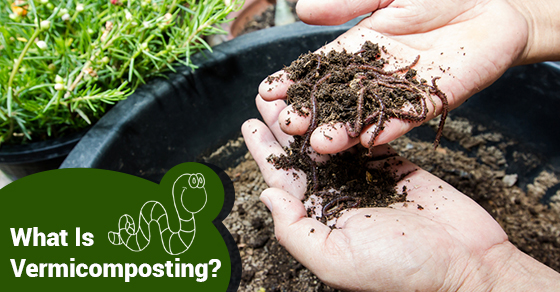Many gardeners are now using compost piles to compost their yard and kitchen waste. But it can be a challenge to continually create new compost piles when kitchen waste is constantly being generated by families throughout the year. That’s why many are now turning to a more time-efficient composting process. In this latest post, we’ll take a look at the trend of vermicomposting and how you can begin the process at home.

Vermicomposting is the process of using worms and microorganisms to turn kitchen waste into nutrient rich plant food and soil conditioner. It’s fairly simple to set up a vermicomposting system. To begin, you’ll need the following:
- A container
- Bedding
- Non-fatty kitchen scraps
- Worms
- Water
Container
The container you choose should be between eight and 12 inches in depth. Small plastic containers work best for this type of composting process, as they can be easily transported compared to wood bins.
Bedding
Bedding must be able to retain moisture and air while providing the worms space to live. Suitable options can include shredded corrugated cardboard, shredded paper, and peat moss. The container should be filled two-thirds with bedding to provide the worms with the optimal space. Then to prepare the bedding for the worms, you must place the bedding in your container, and fill the container with water until the bedding is covered. Then allow the bedding 24 hours to collect moisture.
Worms
The worms used for the vermicomposting process are called red worms or manure worms. They can be ordered through lawn care companies as well as found in bait stores. Consider how much waste you produce within your kitchen to determine how many worms you require. One pound of red worms can compost one half pound of kitchen waste per day. Once you’ve purchased the worms, you can simply add the worms to the bedding. They will then naturally go down to the bottom of the container away from the light.
Feeding
When feeding worms the kitchen scraps, it’s important to start slowly. It will take time for them to develop the bacteria required to turn waste into compost. In the beginning, add only a small amount of vegetable matter to the container and then gradually add more food as the amount of compost in the bin begins to grow.
In about three to four months, you should notice that your bin is full of nutrient rich compost ready to be used! It’s a process that can help you achieve a healthy, pesticide-free environment in your home garden. To learn more on vermicomposting and its unique benefits, call our team today!
